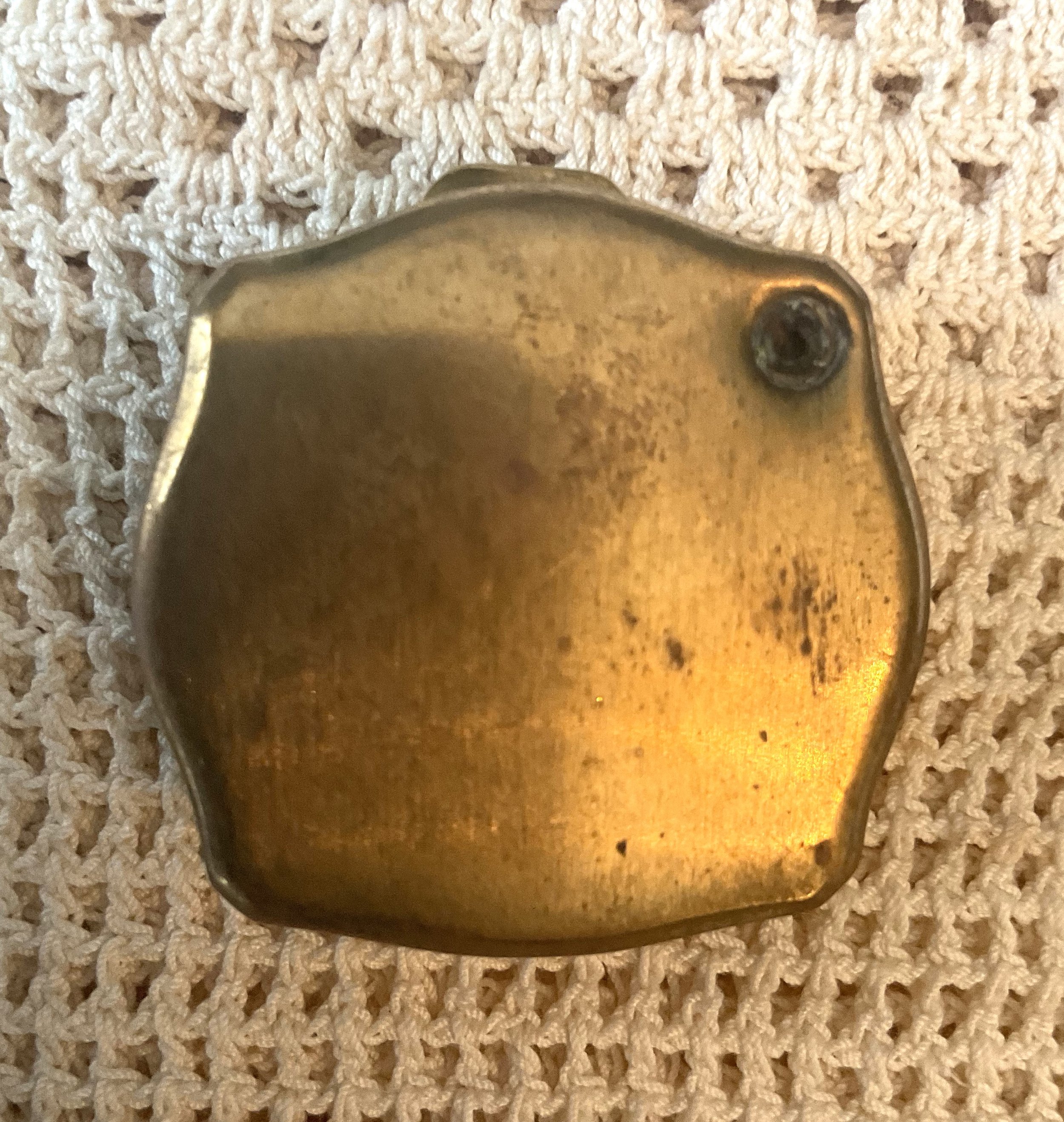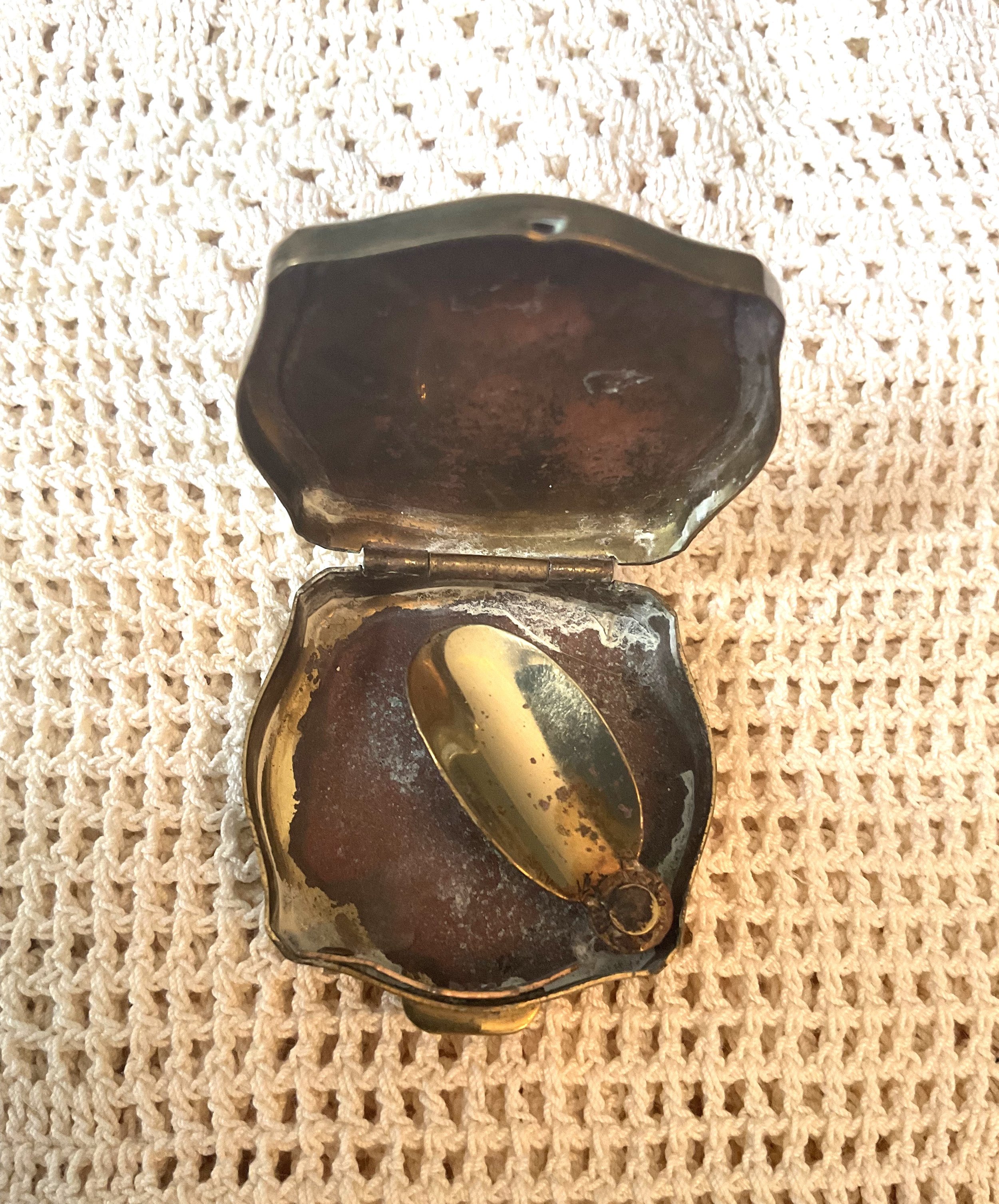 Image 1 of 5
Image 1 of 5

 Image 2 of 5
Image 2 of 5

 Image 3 of 5
Image 3 of 5

 Image 4 of 5
Image 4 of 5

 Image 5 of 5
Image 5 of 5






Elegant Pair Of Art Nouveau Milk Glass Vases
This pair of late 19th century milk glass vases are a shade of cafe latte. They have been skillfully hand painted with botanical images to relflect the Art Nouveau fashion of the time. On closer inspection it can be seen that there are slight differences between the two vases when looking at the detail of the images. This is what makes them so special. If you rub your fingers across the images the texture can be felt. They have also been decorated with fine gold bands.
The Art Nouveau Period (1890 – 1910) heralded an ornamental style of art that flourished throughout Europe, and indeed, the world. Victor Horta, a Belgian architect, is considered to be the Father of Art Nouveau. He attempted to modernise design, moving away from the historical styles that had been popular in the past. The Art Nouveau period was a reaction against academic art and the styles of decorative art prominent in the 19th century. It was used in interior design, jewellery, glass design, posters and illustration. Art Nouveau featured concepts such as long sinuous line, organic shapes such as arches and curves and natural elements such as leaves, flowers, vines, insects and animals. Major artists of this time included Gustav Klimt, Aubrey Vincent Beardsley, Henri de Toulouse-Lautrec and Alphonse Mucha. The Art Nouveau Period was most prominent in France where architecture featured high courtyards, stained glass cupolas and ceramic decoration. Some examples include the metro entrances in Paris, Maxim’s Restaurant, the interior of the Grand Palais des Champs-Elysees and the lamps of the Pont Alexandre 111.
Milk glass, sometimes referred to as opaque glass due to its dense, non-translucent nature, was originally made in the renowned glass furnaces of Venice and Florence during the 1500’s. It simulated porcelain and represented a cheaper alternative. Mainly produced in China, porcelain was highly sought after throughout Europe in the 1500’s and 1600’s. This newer opaque glass became a new option for the middle and lower classes. Colours included blue, pink, yellow, brown, black and white.
It became highly popular once again at the end of the 19th century. Indeed, the term ‘milk glass’ was coined in the Victorian era, where white milk glass became very fashionable. It resurfaced in popularity once again from the 1940’s through to the 1970’s, where milk glass jewellery, light fittings, cosmetic jars and other household items became trendy.
It is rare to come across a pair of milk glass vases dating back to the Art Nouveau period to be in such fine condition. They stand approximately 34 cms in height. Their elegant beauty and their nod to nature would make them a welcome addition to any setting.
This pair of late 19th century milk glass vases are a shade of cafe latte. They have been skillfully hand painted with botanical images to relflect the Art Nouveau fashion of the time. On closer inspection it can be seen that there are slight differences between the two vases when looking at the detail of the images. This is what makes them so special. If you rub your fingers across the images the texture can be felt. They have also been decorated with fine gold bands.
The Art Nouveau Period (1890 – 1910) heralded an ornamental style of art that flourished throughout Europe, and indeed, the world. Victor Horta, a Belgian architect, is considered to be the Father of Art Nouveau. He attempted to modernise design, moving away from the historical styles that had been popular in the past. The Art Nouveau period was a reaction against academic art and the styles of decorative art prominent in the 19th century. It was used in interior design, jewellery, glass design, posters and illustration. Art Nouveau featured concepts such as long sinuous line, organic shapes such as arches and curves and natural elements such as leaves, flowers, vines, insects and animals. Major artists of this time included Gustav Klimt, Aubrey Vincent Beardsley, Henri de Toulouse-Lautrec and Alphonse Mucha. The Art Nouveau Period was most prominent in France where architecture featured high courtyards, stained glass cupolas and ceramic decoration. Some examples include the metro entrances in Paris, Maxim’s Restaurant, the interior of the Grand Palais des Champs-Elysees and the lamps of the Pont Alexandre 111.
Milk glass, sometimes referred to as opaque glass due to its dense, non-translucent nature, was originally made in the renowned glass furnaces of Venice and Florence during the 1500’s. It simulated porcelain and represented a cheaper alternative. Mainly produced in China, porcelain was highly sought after throughout Europe in the 1500’s and 1600’s. This newer opaque glass became a new option for the middle and lower classes. Colours included blue, pink, yellow, brown, black and white.
It became highly popular once again at the end of the 19th century. Indeed, the term ‘milk glass’ was coined in the Victorian era, where white milk glass became very fashionable. It resurfaced in popularity once again from the 1940’s through to the 1970’s, where milk glass jewellery, light fittings, cosmetic jars and other household items became trendy.
It is rare to come across a pair of milk glass vases dating back to the Art Nouveau period to be in such fine condition. They stand approximately 34 cms in height. Their elegant beauty and their nod to nature would make them a welcome addition to any setting.
This pair of late 19th century milk glass vases are a shade of cafe latte. They have been skillfully hand painted with botanical images to relflect the Art Nouveau fashion of the time. On closer inspection it can be seen that there are slight differences between the two vases when looking at the detail of the images. This is what makes them so special. If you rub your fingers across the images the texture can be felt. They have also been decorated with fine gold bands.
The Art Nouveau Period (1890 – 1910) heralded an ornamental style of art that flourished throughout Europe, and indeed, the world. Victor Horta, a Belgian architect, is considered to be the Father of Art Nouveau. He attempted to modernise design, moving away from the historical styles that had been popular in the past. The Art Nouveau period was a reaction against academic art and the styles of decorative art prominent in the 19th century. It was used in interior design, jewellery, glass design, posters and illustration. Art Nouveau featured concepts such as long sinuous line, organic shapes such as arches and curves and natural elements such as leaves, flowers, vines, insects and animals. Major artists of this time included Gustav Klimt, Aubrey Vincent Beardsley, Henri de Toulouse-Lautrec and Alphonse Mucha. The Art Nouveau Period was most prominent in France where architecture featured high courtyards, stained glass cupolas and ceramic decoration. Some examples include the metro entrances in Paris, Maxim’s Restaurant, the interior of the Grand Palais des Champs-Elysees and the lamps of the Pont Alexandre 111.
Milk glass, sometimes referred to as opaque glass due to its dense, non-translucent nature, was originally made in the renowned glass furnaces of Venice and Florence during the 1500’s. It simulated porcelain and represented a cheaper alternative. Mainly produced in China, porcelain was highly sought after throughout Europe in the 1500’s and 1600’s. This newer opaque glass became a new option for the middle and lower classes. Colours included blue, pink, yellow, brown, black and white.
It became highly popular once again at the end of the 19th century. Indeed, the term ‘milk glass’ was coined in the Victorian era, where white milk glass became very fashionable. It resurfaced in popularity once again from the 1940’s through to the 1970’s, where milk glass jewellery, light fittings, cosmetic jars and other household items became trendy.
It is rare to come across a pair of milk glass vases dating back to the Art Nouveau period to be in such fine condition. They stand approximately 34 cms in height. Their elegant beauty and their nod to nature would make them a welcome addition to any setting.
Not suitable for delivery via Australia Post. Collection by appointment. Please make contact if you would like to arrange another type of delivery.





































